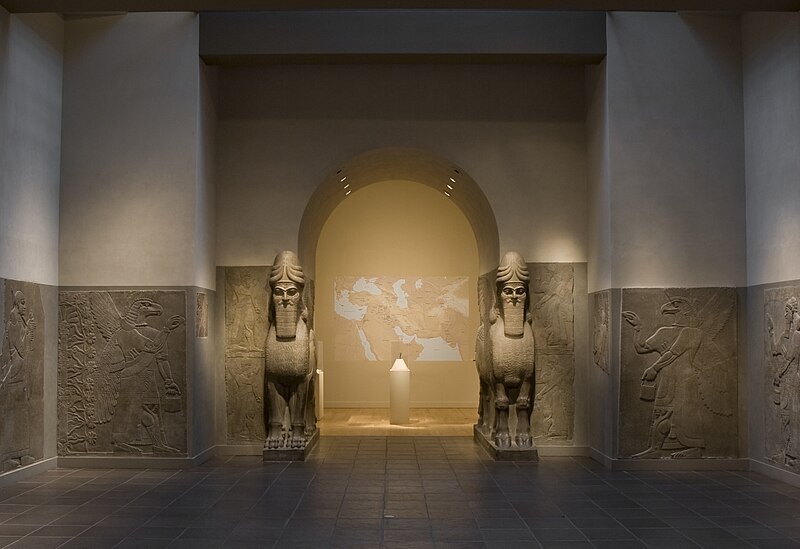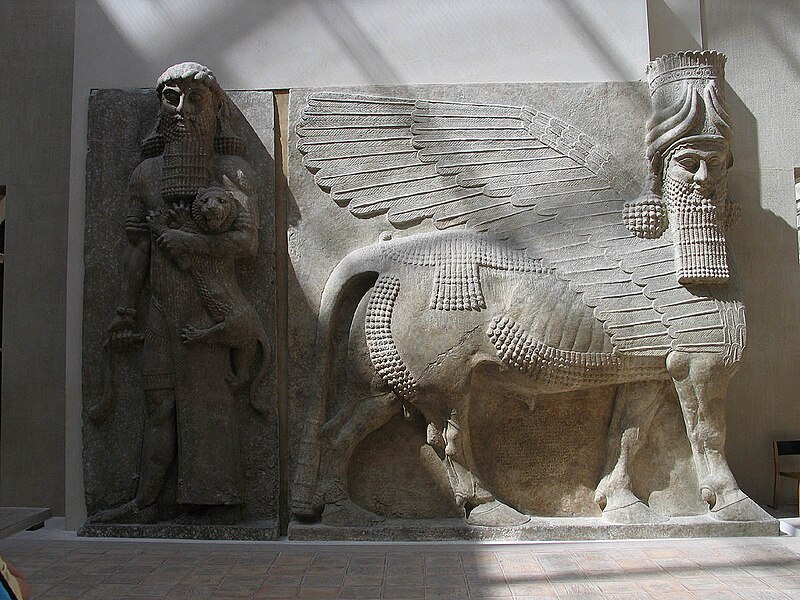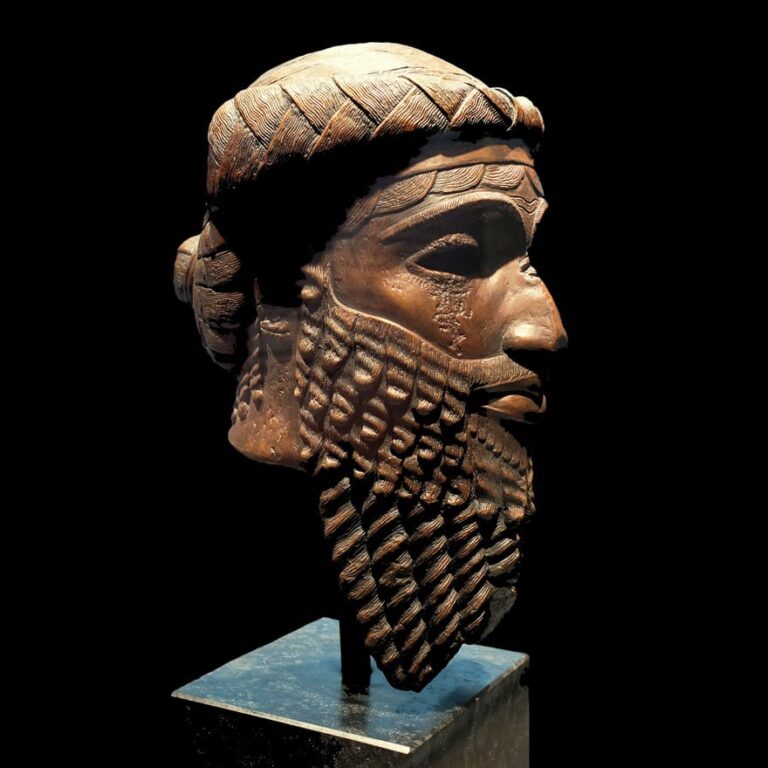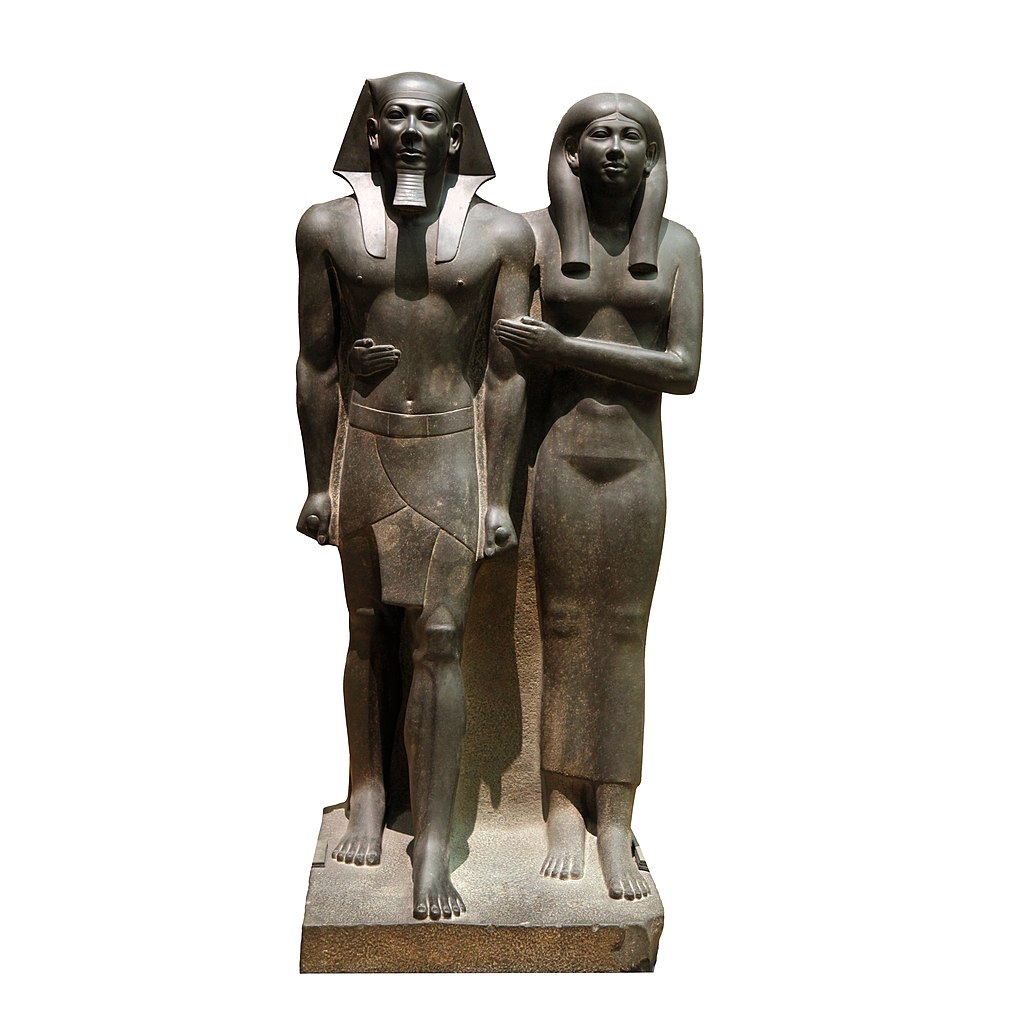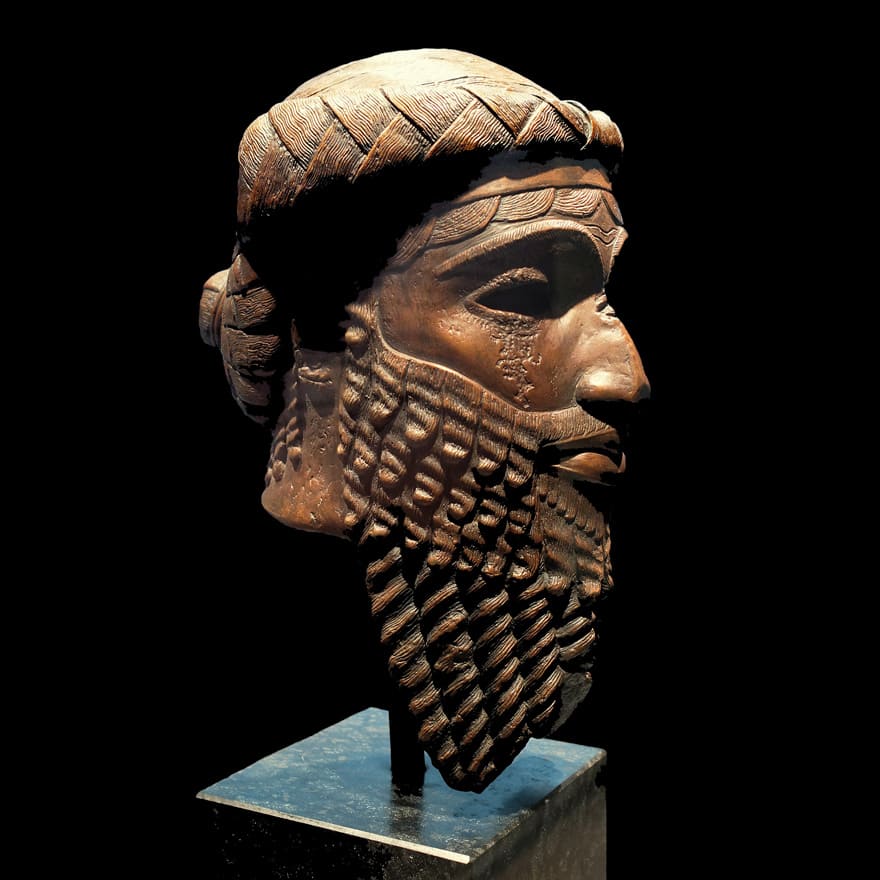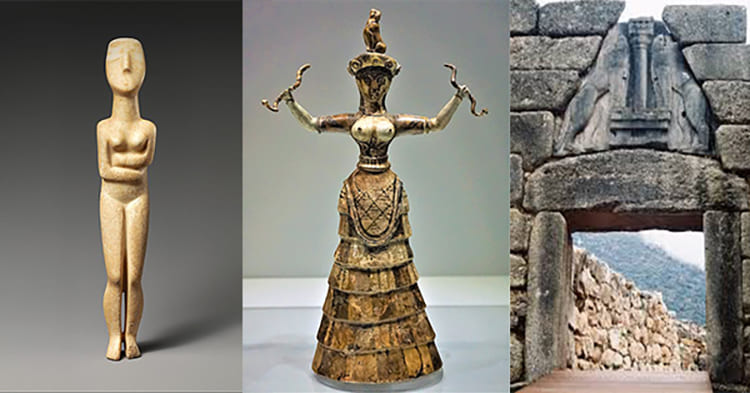8000 BC – 500 AD
Ancient Mesopotamia (modern-day, Iraq, Kuwait, Syria and Turkey) was governed by a variety of cultures, including the Sumerians, Akkadians, Babylonians and Assyrians. Since these cultures are similar enough to be termed Mesopotamian culture, the artistic traditions are classified as Mesopotamian art.
Mesopotamian art survives mainly in the form of sculpture and architecture. Unfortunately, none of the paintings have survived.
Mesopotamian sculptures were predominantly created for religious and political purposes, generally is more emotionally expressive than the symbolic sculpture of ancient Egypt, however it still features the highly distinct stylized aesthetic of contemporary Egyptian work, which makes the lifelike quality of a sculpture less realistic. Textures were accomplished through repetition of lines and dots.
Granite and marble stone were greatly prized as it had to be imported and due to the great distances involved, there was a limit to the size of stones that could be transported to the region, hence most Mesopotamian stone sculpture is small. Since the sculptors lacked granite and marble stone, they mostly turned to metal, bronze, gold, silver and ivory.
Akkadian sculpture
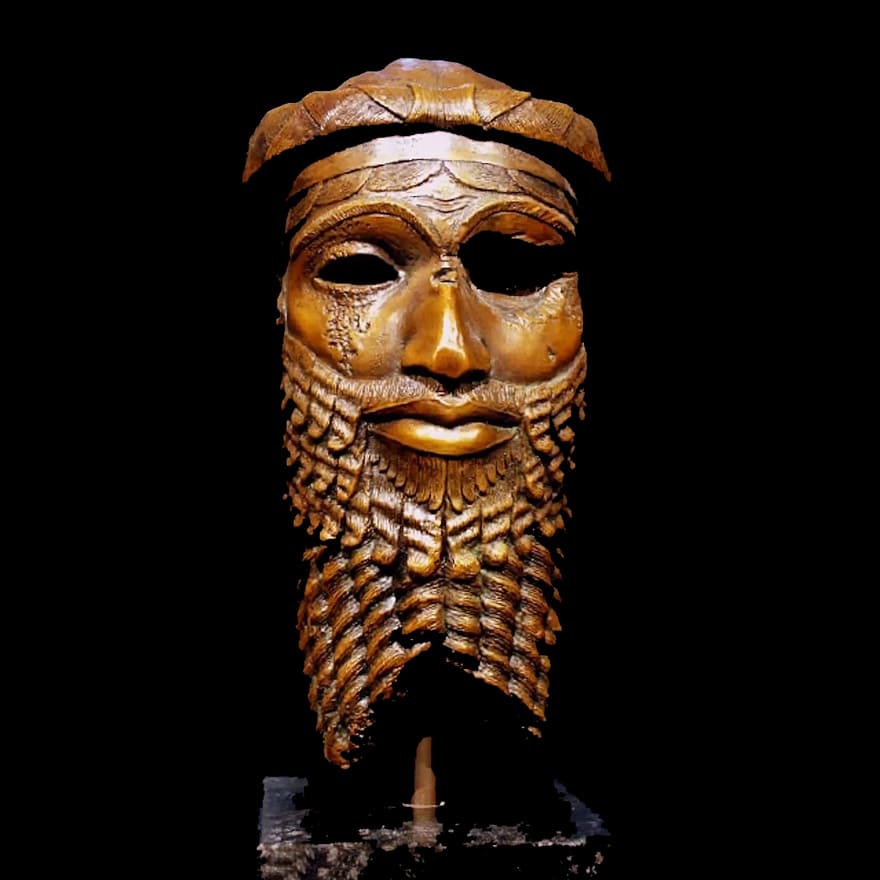
Life-sized head of an Akkadian ruler wearing the wig helmet of old Sumerian rulers in bronze with a height of 30.5cm. The symmetrically balanced head was cast in bronze after having first modelled in clay. This sculpture displays sharp geometric clarity of the perfectly groomed beard, curly locks and herringbone eyebrows. The head has been partially mutilated, the left eye socket has been gouged out, the nose has been flattened at the tip, the ears have been cut off, and the ends of the beard have been broken. Unfortunately, this ancient masterpiece has been looted from the National Museum of Iraq during the U.S. invasion of Iraq in 2003. In fact, more than 15,000 antiquities were stolen, while 7,000 items have been recovered, 8,000 remain missing. (Akkadian sculpture: head of an Akkadian ruler from Nineveh, bronze, height 30.5cm, c. 2300-2200 B.C. National Museum of Iraq)
The most impressive works created by Mesopotamian sculptors are the portal guardians taking form of animals or animals with human heads, which are three-dimensional at the front; however the sides are only carved in relief.
Assyrian sculpture
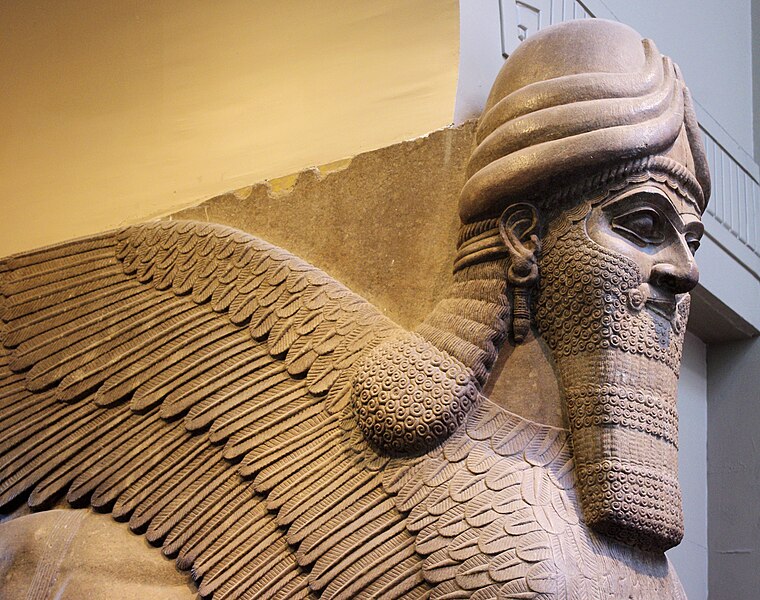
A human-headed winged guardian lion (Lamassu) from the gate of the Assyrian kings palace. Inscription that ran across the surface of most of the reliefs describe the kings palace “I built thereon [a palace with] halls of cedar, cypress, juniper, boxwood, teak, terebinth, and tamarisk as my royal dwelling and for the enduring leisure life of my lordship.” The inscription continues: “Beasts of the mountains and the seas, which I had fashioned out of white limestone and alabaster, I had set up in its gates. I made it [the palace] fittingly imposing.” Among such stone beasts, and unlike most small Mesopotamian stone sculpture, is the huge human-headed winged guardian lion with a height of 262.9cm. The sculptor gave the guardian figures five legs so that they appear to be standing firmly when viewed from the front but striding forward when seen from the side. The human-headed winged guardian lion features a highly distinct stylized aesthetic, the feathers, beard, hair and muscles are carved into patterns very similar to the Akkadian sculpture. Unfortunately, this ancient masterpiece has been defaced in a vicious attack with a drill by terrorists in 2015. (Assyrian sculpture: winged guardian lion from the gate of the Assurnasirpal II at Nimrud, stone, height 262.9cm, ninth century B.C. Metropolitan Museum of Art, New York)
